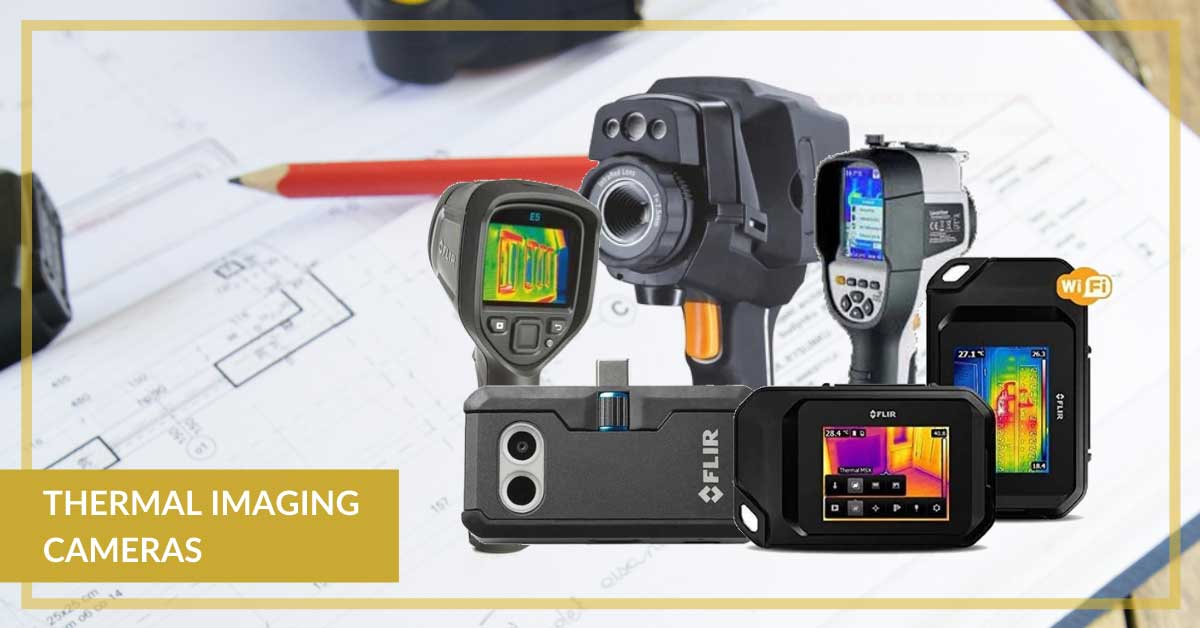Thermal imaging in construction industry
Posted by Philip Hanrahan B.E., B.A., M.I.E.I. on 7th Apr 2021
Infrared thermography is one of the best methods to determine areas of energy loss from buildings, which makes it a necessary tool for many construction businesses. Thermal imaging cameras allow engineers to quickly identify regions of excessive temperature or sources of heat loss, such as thermal insulation gaps.
In 2009 Irish government introduced a legislation that requires any dwelling that is for sale or to let to have a Building Energy Rating (BER) specified. Since using infrared thermography is one of the best methods to determine areas of energy loss from buildings, thermal cameras became practically indispensable.
The best thermal-imaging cameras allow you to see and measure temperature differences accurately and from a safe distance. They are great not only for determining the building's BER but also roof inspections, assessing water damage and many other structural investigations (including tunnels, concrete bridge decking, restoration work as well as the mechanical and electrical systems).
How does a thermal camera work?
In the most basic of terms, thermal imaging allows you to see an object’s heat radiating off itself. Thermal cameras more or less record the temperature of various objects in the frame, and then assign each temperature a shade of a color, which lets you see how much heat its radiating compared to objects around it.
Thermal cameras detect temperature by recognizing and capturing different levels of infrared light and converting infrared radiation into a two dimensional picture. Many models have a sensitivity that will indicate a 0.2 degrees differential. This allows a perfect representation of the energy performance of the structure under known conditions by skilled operators. By using the information intelligently, building owners can assess if and when they require repair or maintenance or if new constructions reach the performance criteria.
How to choose the right infrared camera for you?
With an enormous selection of thermal imaging cameras available on the market today. To find the right thermal imaging camera, you should consider these 5 features of the camera in comparison with the needs of your unique application.
1.Temperature Range: The temperature range of a thermal imaging camera may be one of the most important considerations. Before you make a purchase, you need to ask yourself: At what likely temperature will you be capturing images? Will there be a wide disparity in temperatures?
2. Resolution: Most thermal imaging cameras have lower pixel counts than visible-light cameras, so assessing detector resolution is also an important part of decision making. The size of your imaging area and target will dictate the resolution needed. For example a small object detection will require high-resolution thermal imaging cameras.
3. Accuracy: Often a thermal imaging camera isn’t just used to detect differences in temperature, but also to measure the differences in temperature. In this sense, accuracy and repeatability are key considerations. Most high-quality thermal imaging cameras achieve a ±2% accuracy or better.
4. Image fusion: In certain applications, thermal images must be compared to visible light images to clearly present findings in temperature differences. Some thermal imaging cameras come with the ability to clearly highlight the difference between thermal and visible images, which makes image capture in these applications much easier.
5. Durability: the durability of a thermal imaging camera is important, especially for applications like high-end surveillance, security, and monitoring of critical infrastructure. If thermal imaging cameras must sit outdoors for long periods of time, or be moved around a rugged industrial environment, durability will be an important consideration.
There are many different models of thermal imaging cameras out there and choosing the right one may seem difficult at times. Assessing the 5 camera qualities listed above will point you in the right direction.
There’s no single thermal imaging camera for all applications, but there are models that will be great for a range of tasks. In order to invest your money wisely you need to take your time and really consider what features you do and don't need.
---
Need some help choosing the right tool? Talk to our advisor today - call 01 257 2323

